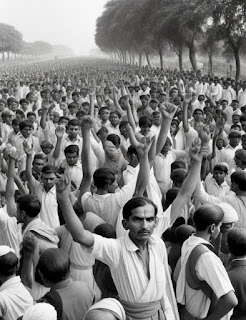The Social Reform Movements in India: Catalyzing Change and Progress

Introduction : Social reform movements in India, which emerged during the 19th and 20th centuries, played a pivotal role in challenging degenerate practices, promoting equality, and reshaping the social landscape. These movements are marked by the efforts of visionary leaders who seek to undo social injustices and promote progressive ideals. Initial catalyst: The emergence of social reform movements can be traced back to early reformers such as Raja Ram Mohan Roy, who advocated causes such as widow remarriage and women's rights. Roy's efforts paved the way for future movements by emphasizing the need to change deeply ingrained social norms. Abolition of Sati Pratha: The social reform movement gained considerable momentum with its efforts to abolish the practice of Sati. The support of Raja Ram Mohan Roy and the intervention of Lord William Bentinck led to the official banning of Sati in 1829. Women's Empowerment: Social reformers such as Ishwar Chandra Vidyasagar and Pand...


